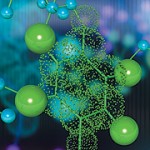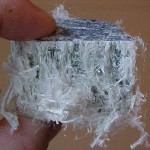 The National Academies have promised a report by the end of January 2012 on priorities (both short- and long-term) for studying the health, safety, and environmental effects of nanotechnology. According to the National Academies, this report will address the following matters: the properties of engineered nanomaterials; methods and technologies for “detecting, measuring, analyzing, and monitoring” engineered nanomaterials; what studies are needed; what testing methods need to be developed; the models for predicting impacts that should be developed; research priorities; and the criteria for evaluating research progress. In its “Statement of Task,” the National Research Council has explained:
The National Academies have promised a report by the end of January 2012 on priorities (both short- and long-term) for studying the health, safety, and environmental effects of nanotechnology. According to the National Academies, this report will address the following matters: the properties of engineered nanomaterials; methods and technologies for “detecting, measuring, analyzing, and monitoring” engineered nanomaterials; what studies are needed; what testing methods need to be developed; the models for predicting impacts that should be developed; research priorities; and the criteria for evaluating research progress. In its “Statement of Task,” the National Research Council has explained:
“The committee will take into consideration current and emerging uses of engineered nanomaterials and the scientific uncertainties related to physical and chemical properties, potential exposures, toxicity, toxicokinetics, and environmental fate of these materials.”
I will discuss the report when it is issued. More information on the National Academies’ research strategy is available at
http://dels.nas.edu/Study-In-Progress/Research-Strategy-Environmental-Health/BEST-K-08-01-A#
This is a promising developing to look forward to, but as with all things, the proof is in the, er, nanopudding (sorry, couldn’t resist). Initiating a task such as this is daunting, with the result a framework for assessment, not the ultimate assessment. But it is a necessary step in what is certain to be a long process.
In a separate project, the National Academies are considering more than the health, safety, and environmental effects of nanotechnology. Pursuant to the Nanotechnology Research and Development Act (Pub. L. No. 108-153), Congress has mandated triennial reviews of the National Nanotechnology Initiative (NNI). The National Academies’ National Research Council convened a committee to conduct the second such triennial review, and its report is due in 2013. Much of the review will entail examining the economic impact of nanotechnology and ways to measure the value of nanotechnologies.
Information on the triennial review project is available at
http://www8.nationalacademies.org/cp/projectview.aspx?key=49409
The two projects discussed in this post demonstrate the efforts to address the two important aspects of progress in the uses of nanotechnology – understanding the health, safety, and environmental effects, and measuring the economic benefits of nanotechnology.
 An interesting and potentially revolutionary development in magnetic storage of data was announced a couple of weeks ago. Researchers at I.B.M. have reported the development of a new class of nanomaterials that could lead to the development of new, significantly smaller memory chips and disk drives that will both hold vast amounts of information and use less power than the current class of silicon chips. The report (Loth, Baumann, Lutz, Eigler, and Heinrich, Bistability in Atomic-Scale Antiferromagnets) appears in the journal Science at Vol. 335, no. 6065, pp. 196-99 (Jan. 13, 2012), and has been widely reported in the news media. There is much excitement over this development, both for its inherent promise for data storage and for its potential in other areas. Analysts have suggested that other new nanomaterials may be forthcoming using some of the same general methodologies and approaches of these researchers.
An interesting and potentially revolutionary development in magnetic storage of data was announced a couple of weeks ago. Researchers at I.B.M. have reported the development of a new class of nanomaterials that could lead to the development of new, significantly smaller memory chips and disk drives that will both hold vast amounts of information and use less power than the current class of silicon chips. The report (Loth, Baumann, Lutz, Eigler, and Heinrich, Bistability in Atomic-Scale Antiferromagnets) appears in the journal Science at Vol. 335, no. 6065, pp. 196-99 (Jan. 13, 2012), and has been widely reported in the news media. There is much excitement over this development, both for its inherent promise for data storage and for its potential in other areas. Analysts have suggested that other new nanomaterials may be forthcoming using some of the same general methodologies and approaches of these researchers. It had to happen sooner or later. And it’s happening now. A coalition of nonprofit consumer safety and environmental groups brought an action on December 21 in federal district court in California against the Food and Drug Administration (FDA). The action seeks an order for declaratory and injunctive relief under the Administrative Procedure Act to require the FDA to respond to a petition filed with the FDA in 2006 which sought action by the agency to assure the safety of the public exposed to nanomaterials, particularly sunscreen products. The requested relief is detailed on pages 3-4 of the petition. The lawsuit is International Center for Technology Assessment v. Hamburg (N.D. Calif., CV 11-6592).
It had to happen sooner or later. And it’s happening now. A coalition of nonprofit consumer safety and environmental groups brought an action on December 21 in federal district court in California against the Food and Drug Administration (FDA). The action seeks an order for declaratory and injunctive relief under the Administrative Procedure Act to require the FDA to respond to a petition filed with the FDA in 2006 which sought action by the agency to assure the safety of the public exposed to nanomaterials, particularly sunscreen products. The requested relief is detailed on pages 3-4 of the petition. The lawsuit is International Center for Technology Assessment v. Hamburg (N.D. Calif., CV 11-6592). The National Institute of Standards and Technology (NIST) has issued what is being touted as the world’s first reference material for single-wall carbon nanotube soot. In its statement, NIST calls single-wall carbon nanotubes (SWCNT) “perhaps the archetype of all nanoscale materials.” The promise of SWCNT in industrial use is great (NIST chemical engineer Jeffrey Fagan stated that “full development of these materials should enable lighter, stronger materials, as well as improve many technologies from sensors to electronics and batteries”). But as with most things, there’s a catch.
The National Institute of Standards and Technology (NIST) has issued what is being touted as the world’s first reference material for single-wall carbon nanotube soot. In its statement, NIST calls single-wall carbon nanotubes (SWCNT) “perhaps the archetype of all nanoscale materials.” The promise of SWCNT in industrial use is great (NIST chemical engineer Jeffrey Fagan stated that “full development of these materials should enable lighter, stronger materials, as well as improve many technologies from sensors to electronics and batteries”). But as with most things, there’s a catch. For those of you who are following this blog, I’ll apologize for letting nearly two months slip away since the previous post. The reason has to do with my co-blogger, Eric Laury. After passing both the Pennsylvania and New Jersey bar exams, Eric took a job in a law firm in Denver, which means he is now studying for the Colorado bar exam. I have every reason to believe that Eric will resume writing for this blog after things settled down for him, but likely as an occasional blogger. I congratulate him on his success and look forward to our continued collaboration.
For those of you who are following this blog, I’ll apologize for letting nearly two months slip away since the previous post. The reason has to do with my co-blogger, Eric Laury. After passing both the Pennsylvania and New Jersey bar exams, Eric took a job in a law firm in Denver, which means he is now studying for the Colorado bar exam. I have every reason to believe that Eric will resume writing for this blog after things settled down for him, but likely as an occasional blogger. I congratulate him on his success and look forward to our continued collaboration. I have written
I have written 
 In a June 9, 2011, memorandum to the heads of U.S. executive departments and agencies, entitled Policy Principles for the U.S. Decision-Making Concerning Regulation and Oversight of Applications of Nanotechnology and Nanomaterials, the White House confirmed its commitment to a “science-based” approach to health and safety matters related to nanotechnology. The memorandum issued from the Office of Science and Technology Policy, the Office of Management and Budget, and the Office of the U.S. Trade Representative. The memorandum described its approach as
In a June 9, 2011, memorandum to the heads of U.S. executive departments and agencies, entitled Policy Principles for the U.S. Decision-Making Concerning Regulation and Oversight of Applications of Nanotechnology and Nanomaterials, the White House confirmed its commitment to a “science-based” approach to health and safety matters related to nanotechnology. The memorandum issued from the Office of Science and Technology Policy, the Office of Management and Budget, and the Office of the U.S. Trade Representative. The memorandum described its approach as
